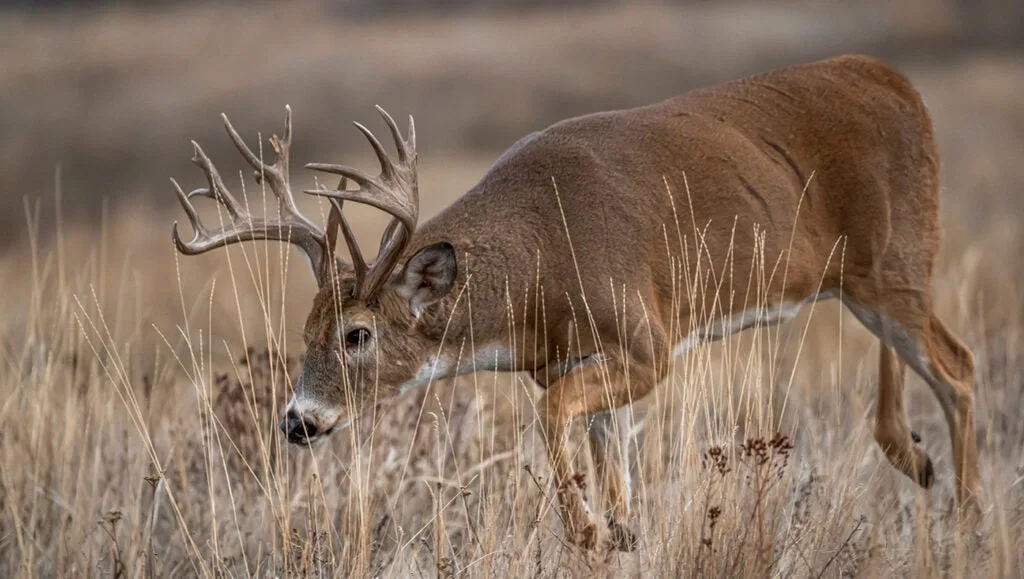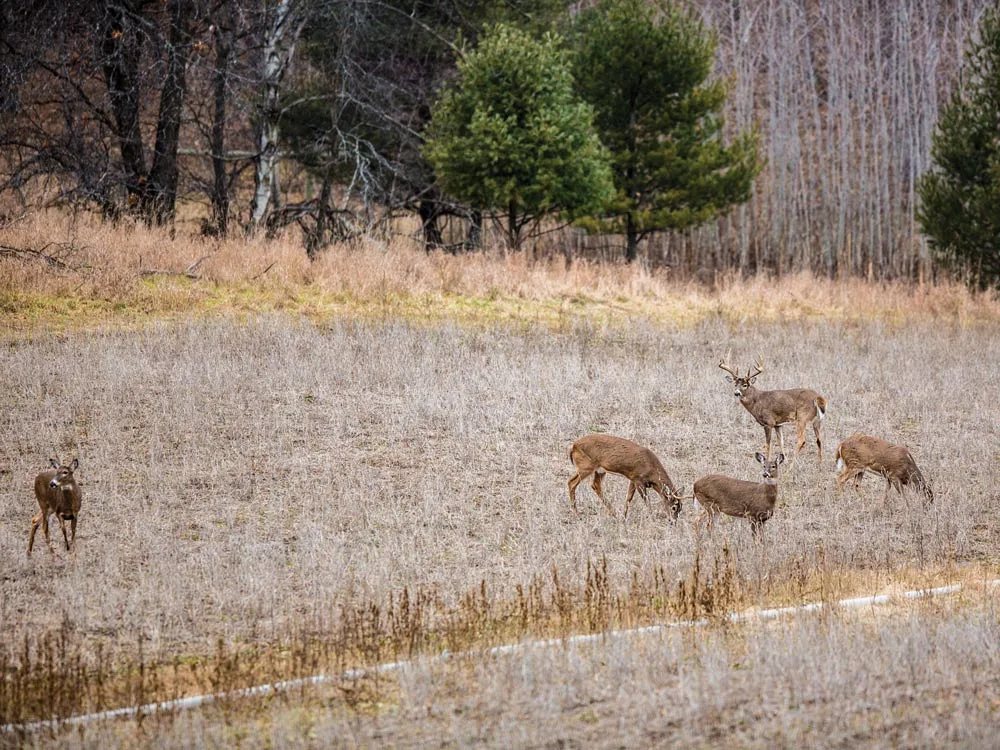Some years, the difference in deer activity between late October and the first few days of November is so great you almost wonder if deer can read calendars. Just a few years back, I sat on Halloween evening and managed to see one decent buck cruise down a logging road. Two days later, I sat the same stand and watched four good bucks run a rub and scrape line out in front of me. That’s the difference a couple days and a single turn of the calendar can make.
As I write this, late October is about to become early November again, and I'm betting that this Saturday, November 2nd, is a perfect day to see that one buck that can make your knees knock and your mouth go dry. He’s been pacing the sidelines for a week or more, waiting to get in the game, and now he’s ready to run full-tilt onto the field. It’s your job to be ready for him today, so let’s put a couple game plans together.
Related: The Best Days of the 2024 Whitetail Rut
Rut Phase: Early Seeking

But first, before we get into strategy, let's recap what you can expect in terms of buck behavior right now. It’s always tough to assign an exact phase description to a date (or clump of dates) as the rut is a dynamic event full of twists, turns, and curveballs. But in the heart of whitetail range, this is the beginning of the year's best hunting. Bucks are raring to go, and while a few does have probably come into estrous by now, the vast majority have not. So, with peak breeding still a week or more out, there should lots of seeking activity, with bucks on their feet and covering ground during shooting hours, searching desperately for a willing mate. In short, really good hunting. This is one of my favorite periods. Bucks know the main event is close and are really feeling it—actively responding to the sights, sounds, and smells of other deer. This makes them vulnerable to not only rattling and calling, but to scent traps and drag rags, too. It's a great time to be in the deer woods.
November 2 Morning Hunt Plan: Set a Drag-Rag Trap
I stole this morning hunt plan from my friend Sam Collora, who has killed four bucks over 200 inches and is easily one of the country’s top deer hunters. He and his wife own Mrs. Doe Pee buck lures, and Sam has perfected the use of deer urine for turning monster bucks into morons. I’ve been lucky enough to hunt with Sam several times, and he taught me this technique on my first visit.
First, make a drag line by tying a swatch of clean fabric to an 18- to 24-inch length of cord and put it in a small plastic bag. Put this in your hunting-jacket pocket, head to your spot, and then leave your truck wearing rubber boots. When you’re about 150 yards from your stand or blind, tie the free end of the drag line to your ankle and douse the fabric with deer urine. As you walk to your stand, stop every 50 yards or so to apply more scent; Sam calls this “heating up the trail,’ and it ensures that bucks follow the heaviest, freshest scent, which leads right to your setup. When you get to your stand or blind—ideally located in a terrain funnel connecting bedding and feeding areas—hang the drag line on a tree limb that hangs 5 or 6 feet off the ground, upwind and within bow range of your setup. Any buck following the scent trail will stop to sniff the rag and present you with a good shot. During this phase of the rut, I like to start extending my morning sits a bit, and I’ll stick with this stand until 11:00 am, unless I’m seeing plenty of deer, in which case I'll hang in there as long as I can stand it.
November 2 Evening Hunt Plan: Stake Out a Doe Food Source

Except for the first week or so of the early season, mature bucks are often reluctant to barge into food sources during legal shooting hours. That light-shyness typically has me setting up in staging areas off the main feed (see the hunt plan for the Best Day No. 1) or near discrete secondary food sources. But everything changes now. With testosterone dumping into a buck's system like an IV drip, he's far more likely to bomb into a major food source before dark now. The difference, of course, is that he’s not there for the groceries anymore but for the girls.
It’s your job to be waiting for him. The best spots are those favored by local does, and the best way to find them is observation or trail cams. Monitor where the does feed and then set up as closely to those preferred spots as possible. Many hunters delete or ignore doe pics when they’re zipping through SD cards or thumbnails from cell cams, but this time of year, give those pics of baldies a special study, as bucks are going directly to where the girls are feeding.
I’ve wriggled into the first rows at the edge of standing corn, knelt in the weeds next to a bean field, and done more hang and hunts than I can count to get close to the does now. If you're having difficulty getting within bow range of the prime feeding spot, don’t hesitate to stake a decoy within a chip shot of your setup. An antlerless deke would work fine, but they tend to attract does that may linger around until they get jumpy and run off. Instead, I tend to stick with a buck decoy with small antlers for this hunt, as any buck worth tagging will certainly trot over to show Junior who’s boss. And you'll be ready.
Read Next: 50 Expert Tips for Hunting the Whitetail Rut


